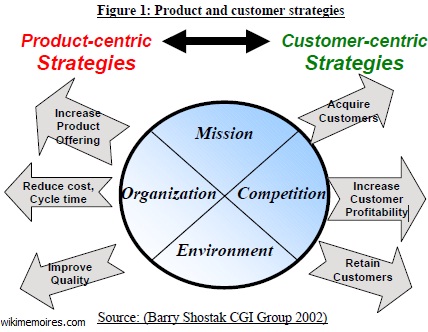European Centre for TQM
University of Bradford UK
Customer Centricity Report
A BRIEFING REPORT
By
Mr. Mohammed Al Ajlan And Prof. M. Zairi
Customer Centricity Report
CUSTOMER CENTRICITY
Introduction
Over the past few years, organisations have focused their attentions on making their organisations operationally more efficient, reducing the cost of running the organisation on a day-by-day basis. As the economy has improved, attention has once again focused on the customer, and ways in which new customers can be attracted, and the revenue generated by existing customers can be enhanced.
The vision of customer centricity is focused on both these objectives, enabling organisations to obtain a complete view of their customers, including all interactions with them, all documents and information that may relate to those customers and all of the communications that have been made with those customers. .
What customer-centricity means is how the whole organisation behaves towards customers, not just the touch points, the decision points, but how the whole business is organised and optimised around the needs of the customer (Curry and Curry 2000).
In the future, the success in business will continue to b depend on how effectively the organisations meet their customers’ needs. If we can listen to those needs carefully, and respond to them with creativity and flair, then we will certainly be able to win the competitive race and make an acceptable profit from what we do. In the future even more than in the past, the customer must be king (Quinn 1996).
No enterprise can any longer succeed in distinguishing itself through operational excellence, customer intimacy, or product innovation without understanding the needs and desires of its customers. Successful enterprises will offer products and services defined by individual customers and achieving excellence in the vital customer touch.
Customer Centricity Report
points of marketing, sales and service, through mass customisation (Galbreath and Rogers 1999).
Customer Centricity Report
HOW TO CREATE A CUSTOMER CARING CULTURE
What is it that forward-thinking companies want these days? Customers that are loyal advocates and employees that are excited, enthusiastic, energetic, and empowered to make decisions that benefit both the customer and the company. They want commitment, they want people who love and take pride in their work and will represent the organisation in the best possible light.
Companies that will move skillfully, successfully and gracefully into the next century want people who CARE, people who care about who they are, what they do and what kind of contribution they are making to the world. Some companies like Starbucks, knows that people who care will deliver a quality level of service in a heart-felt and even effortless manner, and require very little « managing » from the organisation.
Every organisation has a few of these people. But we all need more of them. What percentage of your workforce is made up of people who resemble that description? Three percent, ten percent, maybe fifty percent? Can you increase the numbers of people who care? What can a manager or supervisor do to create an environment where caring is the culture, where caring is the norm, where caring is the driving force of a high quality service effort that flows with seamless agility?
The answer is no secret – create an environment where people feel cared about, where people feel valued, where their personal growth is encouraged and nourished and where there is every effort made to build self-esteem and self-worth, and customer caring will abound.
Achieving and maintaining an effective customer-focused culture would, therefore require considering all of the following (Zairi 2000):
First of all, being customer focused means that we are attempting to get closer to our customers, know them better, be clearer about their needs, be aware of what concerns they may have, and have a feel for their future needs
It is also very important to get some direct feedback on how well we are doing from the customer’s perspective. Sometimes profitability and increases in business are extremely poor measures and it could well be that the reasons are incidental rather than deliberate.
Customer focus means that we are in a position to assess the adequacy of current approaches for fulfilling our customer needs and in a position to know what new services; products and innovations are required in the future. Customer focus means that through concentrating on our customers, we can identify our strengths and weaknesses and assess our performance from a competitive perspective.
Finally, the external feedback is the echo of our efforts and the « acid test » for determining whether we are doing the right things and thereby gauge employee performance and the most appropriate reward and recognition systems.
Figure 1: Product and customer strategies
Product-centric Customer-centric Strategies Strategies
Acquire Customers Increase Product Offering Mission
Reduce cost, Increase Cycle time Customer Profitability Organization Competition
Environment Retain Customers Improve Quality
Source: (Barry Shostak CGI Group 2002)
Customer Centricity Report
Customer centric
How to create a customer CARING CULTURE
How to DELIVER CONSISTENTLY CUSTOMER SATISFACTION
How to create a customer centric organisation
How to drive superior performance through CRM
